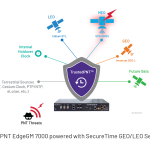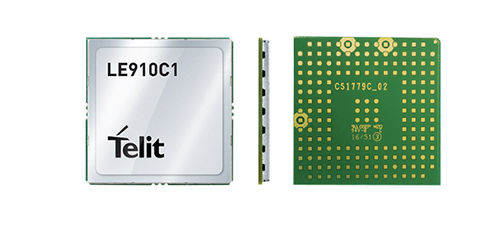One of the biggest 5G network deployment challenges is synchronizing higher volumes of more densely packed base stations. Another is keeping services operating through GNSS lapses due to vulnerabilities such as jamming, spoofing or loss of signal. Microchip Technology Inc., via its Microsemi subsidiary, is solving these and other challenges for networks with additions to its Precision Time Protocol (PTP) PackeTime® portfolio including the TimeProvider 4100 Release 2.0. The TimeProvider release adds 10 Gigabit Ethernet (GE) support, a Boundary Clock operation mode that lowers operational costs, and other enhancements to improve how timing flows are distributed from multiple sources to a network’s base stations and other endpoints.
Extending the TimeProvider 4100’s Gateway Clock operation mode with Microchip’s High-Performance Boundary Clock (HP-BC) operation mode enables it to support the latest high-accuracy ITU-T Class C & D boundary clock standards. These standards dictate extremely accurate time transfer over optical networks so operators can use Dense Wavelength Division Multiplexing (DWDM) technology rather than dedicated fiber. Release 2.0 accommodates escalating bandwidth requirements of next-generation network devices through an optional expansion module that provides 10 GE interfaces. Expanded monitoring functions enable service providers to understand how time and phase performance is affected by network elements. PTP client capacity has been increased to 790 to provide the scalability that is critical for deployments in mobile network aggregation layers and new DOCSIS 3.1 Remote-PHY cable architectures.
For service providers that need to deploy more compact PTP 1588 v2 Grandmasters to fewer base stations closer to the network’s edge, Microchip also recently introduced Release 3.0 to its Integrated GNSS Master (IGM) family. IGM 3.0 combines an IEEE-1588v2 PTP Grandmaster with a GNSS receiver and antenna to simplify indoor or outdoor installations. Each of the three IGM 3.0 additions are designed to deliver precise time and phase as well as new capabilities enabled by IGM Plus hardware models with enhanced oscillators and GNSS receivers. The new oscillator options extend time-keeping holdover performance while the enhanced receiver speeds satellite signal acquisition and improves security by accessing more GNSS constellations simultaneously. The receiver upgrade option supports GPS, Galileo (Europe), QZSS (Japan) and GLONASS, and is BeiDou-ready. The IGM 3.0 software includes higher PTP capacity to 60 clients along with IPv6 support for traffic and management flows.
“Microchip is committed to helping service providers navigate the transition to new networks while solving increasingly difficult precise time and synchronization challenges so they can maintain reliable service delivery and offer new services,” said Randy Brudzinski, vice president and general manager of Microchip’s frequency and time business unit. “We solve these challenges with maximum flexibility and scalability. Whether service providers need to distribute timing flows to endpoints using our TimeProvider 4100 Release 2.0 with its Grandmaster, Gateway Clock and HP-BC Operation Modes or synchronize devices at the network edge with our easy-to-deploy IGM grandmaster that greatly enhances scalability, our goal is to help them get the most out of their investments as they launch 5G, IoT, DOCSIS 3.1 cable, video and other services.”
Both TimeProvider 4100 Release 2.0 and IGM Release 3.0 are managed with TimePictra, the centralized and unified management platform for the company’s broad family of precise timing systems.






